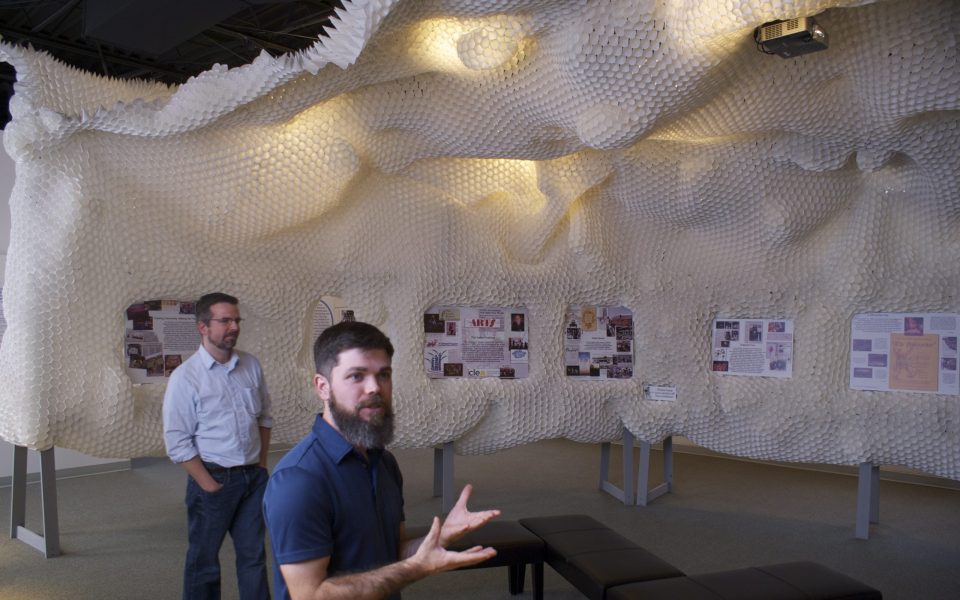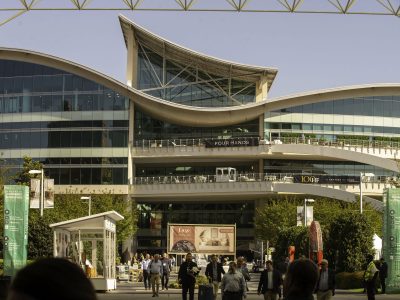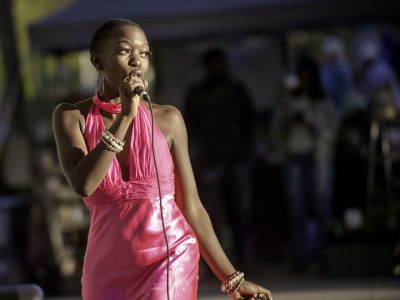by Eric Ginsburg
Most art exhibits are fleeting, occupying a space for a few months before coming down or moving on. But Chris Jordan and Mike Wakeford have worked on This School, This City too long and dreamed up too much programming around the exhibit to cut it that short.
It took a full year of planning the exhibit at the New Winston Museum, which focuses on the relationship between the larger city since and the School of the Arts since the school opened 50 years ago, for the concept to come to fruition. Even after the opening last weekend, more pieces are still coming together, building over the exhibit’s nine-month lifespan.
Walking through the museum, Wakeford gestured towards a back corner of the exhibit. A stage will be going there, the UNCSA history professor and museum board member said, and it will facilitate student performances ranging from music to a one-man play.
The area that will soon host a stage and could seat about 50 people comfortably is enclosed by the centerpiece of This School, This City, an installation made out of tens of thousands of white paper cups resembling an undulating wasps’ nest and held together with 100,000 staples. “The Climber,” as it is called, emanates from the corner behind the stage, growing from a narrow strip up the wall and across much of the ceiling before forming a curtain that divides the room.
Several of the exhibit panels, detailing various elements of the school’s history and interaction with the broader community, are enmeshed in the hive. UNCSA scene design student Michael Harbeck, with the help of grad student Ryan Callahan and others, created the piece specifically for the show, the largest of several components that bridge typical divides between art shows and museum exhibits.
It’s a wonder to behold, backlit in places to evoke stage lighting and symbolizing how many individual parts can create a larger force. In Wakeford’s eyes, it also embodies the spirit of ascent and artistic expression.
That excites Chris Jordan, the education and programming director of the New Winston Museum who co-curated This School, This City with Wakeford. When the museum recently examined and rewrote its mission to emphasize the importance of collaborative projects, Jordan said it paved the way for something like this exhibit which he hopes could turn into a continuing relationship with the school.
It also affords the museum the opportunity to showcase an exhibit that is significantly more dynamic and engaging than most traditional museums, particularly important considering that the New Winston Museum is entirely privately funded.
Some elements of the exhibit still adhere to expected norms — the pull quotes from people who played key roles, the poster-like displays with historic photographs and newspaper clippings. But not only is the story uniquely of Winston-Salem, drawing out past tensions between the school and the city’s more conservative blue-collar base, but it will also be continually evolving.
A screen mounted on a wall near where the stage will be plays a documentary video in loop, highlighting a recent alum who is already making strides as a filmmaker. Over time, folks at UNCSA’s School of Filmmaking will create five of these documentary shorts for the exhibit, picking an alum from each decade of the school’s history and five different artistic disciplines to illuminate the breadth of its influence.
The variety of elements and programming — as well as the installation — are what make This School, This City so interesting. Residents were engaged in a handful of ways, including a survey. An old rotary phone, symbolic of those used in the “Dial for Dollars” campaign to raise funds to attract and support the school decades ago, sits on a stand in the exhibit and visitors are asked to record their memories related to the topics on display.
Speakers hanging from the ceiling throughout the large room played back reminiscences, and quotes rotating on a screen at the end of the exhibit lifted up the importance of UNCSA in various people’s lives.
But no quote sums up the sentiment and thesis of This School, This City better than one from theater producer David Binder emblazoned on the wall towards the end of the display.
“Artists are explorers,” it reads. “Who better to show us a city anew?”
The curators host a behind-the-scenes talk about This School, This City on Thursday at 5:30 p.m. at the New Winston Museum, 713 S. Marshall St. (W-S).
Join the First Amendment Society, a membership that goes directly to funding TCB‘s newsroom.
We believe that reporting can save the world.
The TCB First Amendment Society recognizes the vital role of a free, unfettered press with a bundling of local experiences designed to build community, and unique engagements with our newsroom that will help you understand, and shape, local journalism’s critical role in uplifting the people in our cities.
All revenue goes directly into the newsroom as reporters’ salaries and freelance commissions.





Leave a Reply